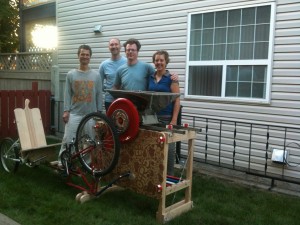Over the past five years Canada has seen a consistent increase in tobacco manufacturing exports. According to trade data provided by Industry Canada tobacco manufacturing exports reached a total of just over $170 million in 2015. An increase of 118 per cent compared to the approximate $78 million worth of tobacco Canada exported in 2011.
“Most people expect tobacco farming is either on the serious decline or is almost ceased in Canada,” says David Hammond, a professor with the school of public health and health systems at the University of Waterloo. For Hammond, the trade data says, “this industry isn’t dead, quite clearly and that tobacco farming in Canada is not dead. I think that runs counter to most people’s assumptions.”
Tobacco exports have been steadily increasing in Canada despite the reduction of smoking in Canadian culture. According to the Canadian Tobacco Alcohol and Drugs Survey (CTADS), conducted by Statistics Canada on behalf of Health Canada in 2013, the percentage of the population who smoked was 15 percent (4.2 million smokers). In 2013, daily smokers smoked on average 13.9 cigarettes per day, decreasing from the 2012 average of 15 cigarettes per day. According to the survey it’s the lowest national smoking rate that has ever been recorded. It has been the result of countless anti-smoking initiatives by groups from the local level to provincial and federal governments in the attempt to make Canada smoke free.
Jamey Essex, an environmental studies professor at the University of Windsor, views the trend as the tobacco industry successfully finding different markets overseas. “If they can’t find a market domestically then they try to find a new one abroad, because they are not going to just shut down production.
Canada’s biggest tobacco export partners in 2015 were the United States ($108.8 million), China ($32.8 million), the United Arab Emirates ($8.4 million), and Vietnam ($4.1 million). For Essex the “decline in smoking at home is offset by an increase in smoking in other countries. That’s where they’ve focused on exports to make up the gap.”
In countries like the United Arab Emirates, 25-30 per cent of the male population smokes tobacco and there’s concern that smoking is on the rise not only in the country but also across the Middle East. Vietnam, according to the World Health Organization, has seen an increase in the estimated number of smokers from approximately 16.3 million smokers in 2010 to approximately 17.3 million in 2015. While most of the remaining countries in the top ten list have either stagnating or decreasing smoking populations, they are still comparable or higher than Canada’s smoking population.
The survival of the Canadian tobacco industry isn’t just about which countries tobacco is being shipped to. It has also been about how tobacco manufacturers have been able to adapt to the ever-changing business landscape. One aspect of tobacco farming that Jamey Essex points out is the physical size of the farms. “Tobacco farms are usually really small because it doesn’t take a lot of land to produce a lot of tobacco in terms of value,” he said.
When looking at the trade data David Hammond sees a different international trend at work for Canada’s tobacco exports. “Looking at some of the countries. It would suggest it might be some of the big multinationals (tobacco manufacturers).” Imperial Tobacco Canada for example, moved it’s tobacco manufacturing to Mexico after closing down facilities in Guelph (2006) and Aylmer Ontario (2007). American tobacco company Philip Morris International is now headquartered in Switzerland and owns Canadian tobacco brands such as Rothmans, Craven A, and Belmont. The Chinese National Tobacco Corporation, owned by the Chinese government manufactured about 2.5 trillion cigarettes in 2013 alone.
As for when the success might end Essex believes that it won’t last for more than ten years because “there’s a limit of how much tobacco they can pump into those countries,” along with the potential rise of health concerns in those countries. But until then the Canadian tobacco industry continues to find ways to stay in business.








